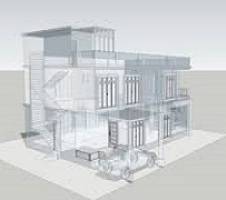November 3, 2014
BIM adoption set to soar in UK and US over next two years, claims report
 Building owners are embracing building information modelling (BIM) as a powerful technology benefitting the design process, managing project schedules, controlling costs and minimizing project errors, according to the recent McGraw-Hill Construction SmartMarket Report “The Business Value of BIM for Owners”. The latest report focuses on the business value of BIM from the perspective of building owners in the United States and United Kingdom for whom the technology has been deployed. Initially adopted as a design tool and later evolving into an important tool for contractors, its adoption among building owners is expanding, the report claims, and that building owners are becoming more directly involved as “their power is even greater to align BIM use with their specific goals, engage more effectively with all stakeholders and extend the value of BIM beyond construction into facility management.” The study claims that 40 percent of US owners and 38 percent of UK owners expect that more than 75 percent of their projects will involve the technology in just two years.
Building owners are embracing building information modelling (BIM) as a powerful technology benefitting the design process, managing project schedules, controlling costs and minimizing project errors, according to the recent McGraw-Hill Construction SmartMarket Report “The Business Value of BIM for Owners”. The latest report focuses on the business value of BIM from the perspective of building owners in the United States and United Kingdom for whom the technology has been deployed. Initially adopted as a design tool and later evolving into an important tool for contractors, its adoption among building owners is expanding, the report claims, and that building owners are becoming more directly involved as “their power is even greater to align BIM use with their specific goals, engage more effectively with all stakeholders and extend the value of BIM beyond construction into facility management.” The study claims that 40 percent of US owners and 38 percent of UK owners expect that more than 75 percent of their projects will involve the technology in just two years.
The report’s authors claim that growth in the UK is being driven by the approaching implementation of a central government mandate requiring use of BIM on all national public projects by 2016 with two thirds (67 percent) of UK owners report the mandate has a high impact on their use of BIM.
“BIM has taken the industry to a new level over the last several years in terms of leveraging technology for gains in productivity, accuracy, quality, and worker safety,” said Mark Konchar, chief enterprise development officer at Balfour Beatty Construction. “BIM innovation is continuous and as the latest SmartMarket report indicates, building owners are increasingly realizing great value from BIM through strategic collaboration with their AEC partners, in addition to compelling facility management capabilities. As building owners expand their BIM strategies, we encourage them to promote open and creative collaboration among all partners early in the process which often leads to significant opportunities for innovation and project value.”
In the report, owners were asked to rate the potential positive impact of several different factors on the likelihood they can increase BIM involvement and value. The three key factors that building owners believe will increase BIM skills and activity levels are the following:
- More BIM skills among contractors, trades and fabricators
- More BIM skills at design firms
- More use by other owners in the areas where they work
Building owners are ultimately the greatest beneficiaries of BIM and today are increasingly adopting BIM to add value to their own facility management and operations environments, according to the report. When asked what messages they have for the design and construction industry about the future of BIM, owners’ responses centred on BIM as the future, encouraging the industry not to resist it. As stated in the report, one owner’s response summed up the general sentiment: “To not adopt BIM and all its capabilities is like continuing to use a flip phone instead of a smartphone.”












